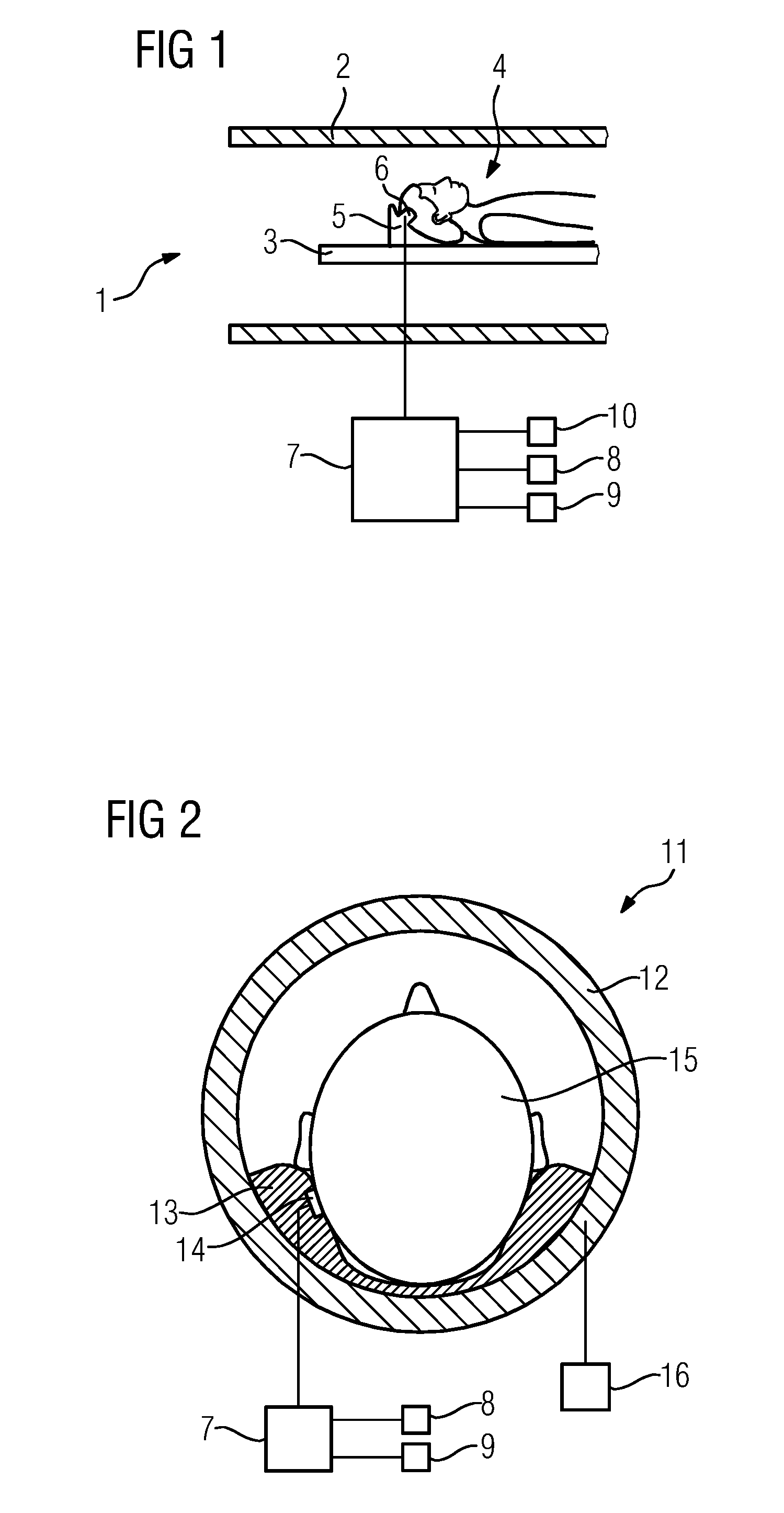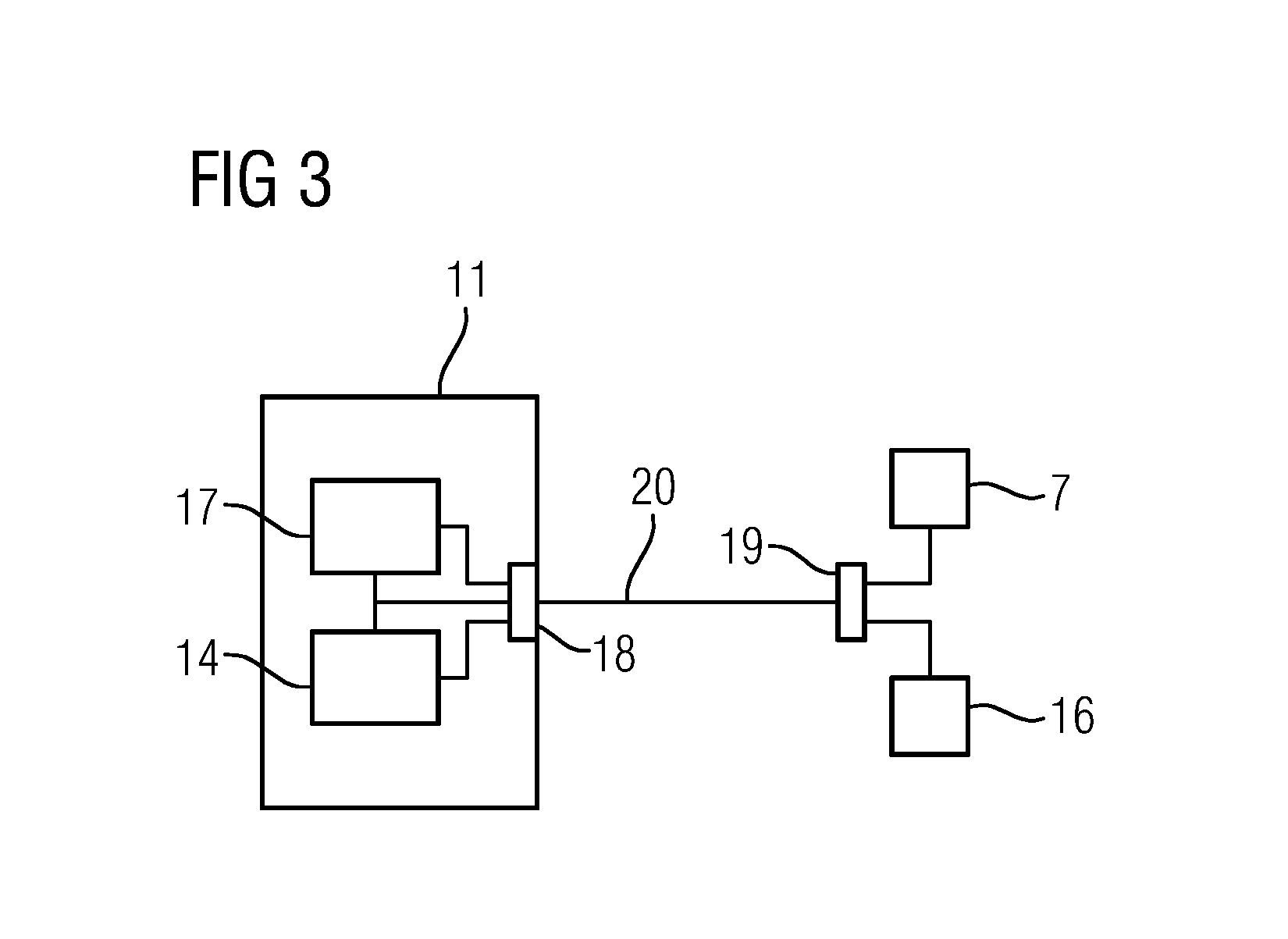Patient Communication in Magnetic Resonance Tomography
a technology patient communication, applied in the field of magnetic resonance tomography, can solve the problems of inability to use permanent magnet sound transducers, patients' and/or operators' perception of disruptive types of compressed air hoses, and achieve the effect of small surface area and low induction
- Summary
- Abstract
- Description
- Claims
- Application Information
AI Technical Summary
Benefits of technology
Problems solved by technology
Method used
Image
Examples
Embodiment Construction
[0024]FIG. 1 shows a sectional, partial view of a magnetic resonance tomograph 1. A patient 4 is introduced on a couch 3 into a bore 2 of the magnetic resonance tomograph 1. In this case the head of the patient 4 is supported by a component 5 configured as a head support. A contact area 6 is provided on the component 5, on which the temple of the patient 4 rests during the imaging with the magnetic resonance tomograph 1.
[0025]Disposed in the contact area 6 is an actuator not shown in FIG. 1. Upon activation by a control signal, the actuator moves the surface of the contact area 6 facing toward the patient 4. The control signal is provided by the control device 7. The control signal involves an audio signal, such as speech. The patient communication device of the magnetic resonance tomograph 1, in addition to the actuator not shown in the figure and the control device 7, additionally includes a microphone 8 and a loudspeaker 9, which are both disposed outside the bore 2 of the magnet...
PUM
 Login to View More
Login to View More Abstract
Description
Claims
Application Information
 Login to View More
Login to View More - R&D
- Intellectual Property
- Life Sciences
- Materials
- Tech Scout
- Unparalleled Data Quality
- Higher Quality Content
- 60% Fewer Hallucinations
Browse by: Latest US Patents, China's latest patents, Technical Efficacy Thesaurus, Application Domain, Technology Topic, Popular Technical Reports.
© 2025 PatSnap. All rights reserved.Legal|Privacy policy|Modern Slavery Act Transparency Statement|Sitemap|About US| Contact US: help@patsnap.com



